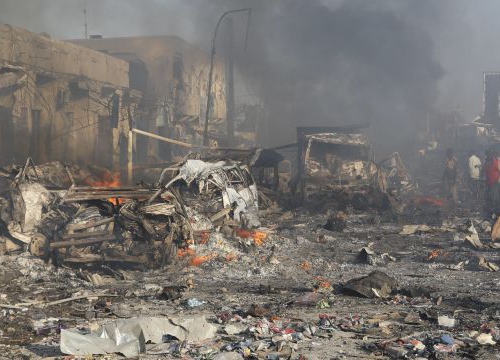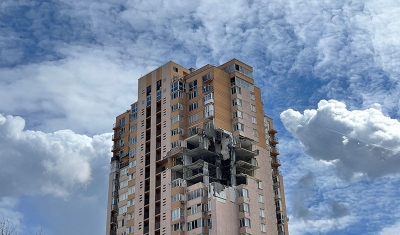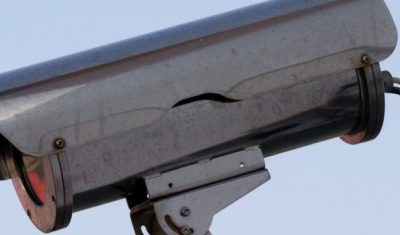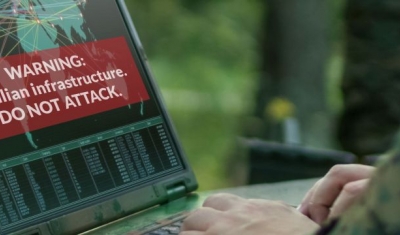Research with an Impact: Towards a Better Understanding and Respect of the Geneva Conventions


ICRC
12 August 2019
Our research examines IHL issues that are under-explored or need clarification and thus advances the understanding and stimulates debate in the academic community and in policy-making institutions and government. Our findings regularly inform policy recommendations and support practitioners working on IHL and humanitarian action and diplomacy.
Several of our current and past research projects aim at clarifying the meaning of the Geneva Conventions in contemporary circumstances.
The Classification of Armed Conflicts
Before the Geneva Conventions can be applied to an international armed conflict or their common Article 3 can be applied to a non-international armed conflict, one must determine whether a situation of violence corresponds to one of those categories or not (in which case IHL does not apply).
Such classification of situations from an IHL perspective is made in two unique products of the Geneva Academy: the Rule of Law in Armed Conflict (RULAC) online portal and the War Report.
RULAC identifies and classifies all situations of armed violence that amount to an armed conflict under IHL. As a legal reference source, it provides information about the definition and categories of armed conflict under IHL; the legal framework governing armed conflicts; whether a situation of armed violence is an armed conflict pursuant to IHL criteria; parties to these armed conflicts; applicable IHL. RULAC is currently monitoring more than 37 armed conflicts involving at least 51 states.
An essential reference for experts, governments, policy-makers, NGOs, international organizations, donors, international courts and tribunals, judges and lawyers who work on human rights, humanitarian issues, and peace or security, the War Report, published annually, provides an overview of contemporary trends in current armed conflicts, including key IHL and policy issues that have arisen and require attention.

Armed non-State Actors
From Syria to Mali, Afghanistan or Yemen, today’s armed conflicts are mainly non-international in character and involve one or several armed non-state actors (ANSAs). These often control territory and persons for a prolonged time and are involved in human rights and IHL violations. Common article 3 of the Geneva Conventions clarifies that it binds such ANSAs as well as governmental armed forces in a non-international armed conflict.
Our current and past research on ANSAs addresses bot the need to clarify the legal framework applicable to these actors, as well as ANSAs’ practice of and its relation to international law.

Investigating in Situations of Armed Conflict
The investigation of death and harm during situations of armed conflict is a key area of humanitarian concern with profound implications for the application of IHL. The duty to investigate in situations of armed conflict is implied, but not mentioned directly in the Geneva Conventions. As such, clearer guidance would appear to be of use in several areas, including the circumstances that should trigger an investigation, who should carry it out, what its nature should be, the principles that should underpin it, and what an appropriate outcome would be.
This project, initiated in 2014 by the Geneva Academy and joined in 2017 by the International Committee of the Red Cross (ICRC), intends to identify, via expert meetings and research, a set of guidelines based on law, policy and good practice that states should apply when they investigate alleged violations of IHL in situations of armed conflict.
It complements past research on standard of proof in fact-finding, which examined whether a minimum formal standard of proof exists or is required when ad hoc fact-finding and inquiry commissions adjudicate on situations of human rights and IHL violations.

Disability and Armed Conflicts
An estimated 15 percent of the world’s population, approximately 1 billion people, have some form of disability (involving a physical, psychosocial and/or intellectual impairments), a large percentage of which will be living in conflict-affected states.
The publication Disability and Armed Conflict brings attention to the devastating impact conflict has on persons with disabilities and, crucially, highlights that many of the key IHL provisions that serve to minimize the impact of armed conflict – such as the proportionality assessment and advanced effective warnings – but also provisions of the Geneva Conventions on the treatment of prisoners of war and detained civilians are not being applied in a disability-inclusive manner.
However, under the UN Convention on the Rights of Persons with Disabilities (CRPD) which equally applies in armed conflicts, States must reasonably accommodate their policies and interpretation of the Geneva Conventions to allow that persons with disabilities can exercise their rights and be protected.
It offers eight key findings and recommendations for states, humanitarian organizations and the UN Committee on the Rights of Persons with Disabilities. The findings and associated recommendations relate to: the application of the CRPD in differing conflict settings, the relationship between the CRPD and IHL, as well as analysis of a number of key IHL norms, including adverse distinction and humane treatment.

‘Foreign Fighters’ and Counter-Terrorism
Our research analyzed the phenomenon of ‘foreign fighters’ from the perspective of international law. The findings, compiled in the publication Foreign Fighters under International Law cover a range of international law issues associated with ‘foreign fighters’, including their status during armed conflicts under the Geneva Conventions; the meaning of acts of terrorism under international humanitarian law; ‘foreign fighters’ under universal and regional counter-terrorism frameworks; the prosecution of ‘foreign fighters’; diplomatic protection of captured ‘foreign fighters’; limitations on freedom of movement to prevent the departure of aspiring ‘foreign fighters’ and the revocation of citizenship of suspected ‘foreign fighters’.

The International Code of Conduct for Private Security Providers
The International Code of Conduct for Private Security Providers (ICoC) is the result of an active collaboration between members of the private security industry, the Swiss Department of Foreign Affairs, the Geneva Centre for the Democratic Control of Armed Forces and the Geneva Academy.
It aims to promote respect for international law and standards among private service providers by clarifying international standards for the industry and to improve their oversight and accountability. Its monitoring and governance mechanism, the International Code of Conduct for Private Security Providers’ Association (ICoCA), is based in Geneva.
Throughout the drafting process of the ICoC, the Geneva Academy provided academic expertise to ensure that international legal standards and in particular the Geneva Conventions were appropriately reflected in the document.
On 9 November 2010, 58 private security providers signed the ICoC. Today, 91 companies are members of the ICoCA and therefore formally committed to operating in accordance with the ICoC.

Protection of Education in Armed Conflict
This project analysed how United Nations (UN) human rights treaty bodies and relevant UN Charter-based mechanisms and entities have addressed the implementation of the right to education and other relevant rights in armed conflict and armed violence.
The report, United Nations Human Rights Mechanisms and the Right to Education in Insecurity and Armed Conflict offers recommendations on how the protection of the rights to education might be strengthened during armed conflicts.

The Law of Military Occupation
This research looked at the protection of civilian populations subject to the control of a foreign army by analysing the link between the international law of military occupation, mainly codified in the Fourth Geneva Convention, and human rights.
While adopting a global approach to military occupation, the project focused on the nature and evolution of the regimes implemented in Afghanistan and Iraq and identified uncertain areas of, or even loopholes in, the applicable law and proposed an update of an old legal regime that dates back mainly to 1907 and 1949. It resulted in the book Le droit de l’occupation militaire – Perspectives historiques et enjeux juridiques actuels (Bruylant, 2009).

















